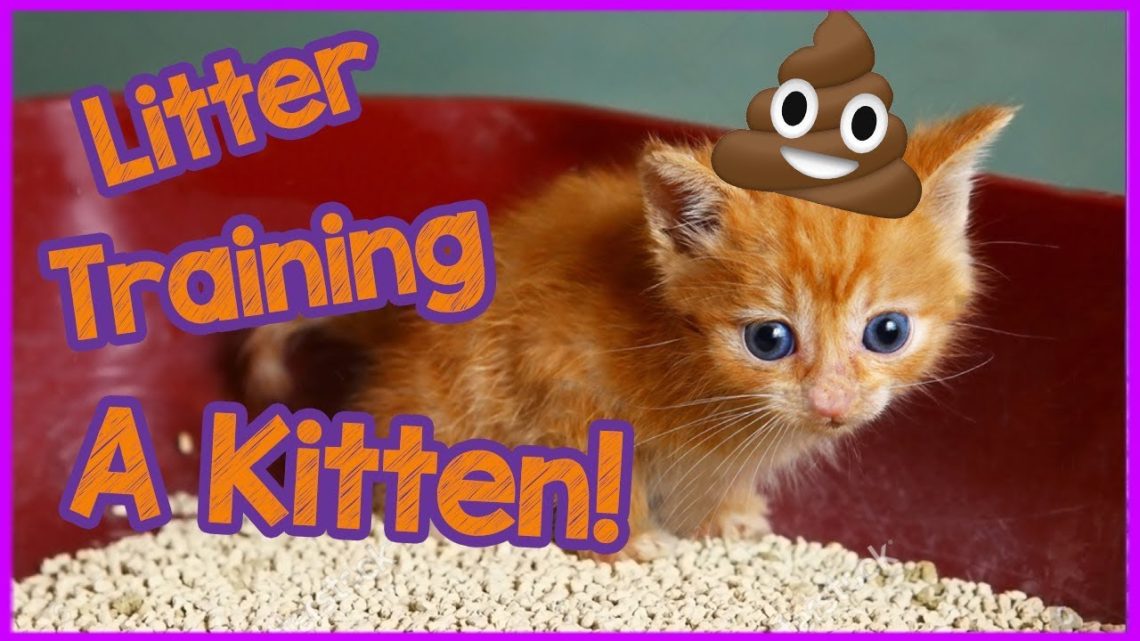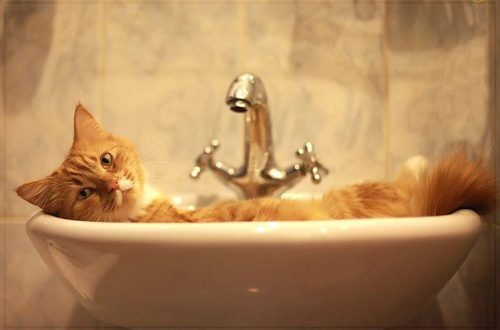
Cara nglatih anak kucing - CEPAT lan GAMPANG
Paragraf
Basic Rules and Tips
Many kittens purchased from conscientious breeders are already accustomed to the tray, but this does not mean that, once in a new home, they will immediately begin to demonstrate the acquired skills. It is possible that the child will have to go through the course again. If your domestic cat gave birth to a kitten, she herself can teach him a lesson in keeping order: babies usually copy the behavior of their mother. In such happy cases, the owner, who decides to leave the kitten in the family, will only need to purchase an individual tray for the new pet and clean it regularly. But, as a rule, the work on accustoming a little fluffy to the toilet still falls on the shoulders of its owner. This important mission includes a number of obligatory moments and the understanding that it will be impossible to cope with such a task in a day or two.
Regardless of the age at which a kitten came to you, you need to teach him to go to the tray from the moment he finds himself in your house. Already in a month, babies are ready to absorb information, acquire new skills. It is not too late to develop the necessary skills in a two-month-old baby. But a three-month-old kitten, to whom Skoda frivolously said goodbye, will be very difficult to wean from shitting anywhere – by this time his character will be completely formed. After six months, re-education may be completely useless.
Restrict the kitten’s movement around the house. Let him temporarily stay in the room where you yourself stay most of the time – so you can observe the behavior of the baby and at the right time have time to move him to the tray. For convenience, the tray itself is temporarily placed in the same room. When the kitten gets used to the box, move it to a more suitable place.
From time to time gently place the kitten in the tray, providing an opportunity to study it, understand its purpose, sniff and get used to it.
Kittens, as a rule, go to the toilet after eating or after sleeping. Seize this moment, gently grab the baby under the tummy and take it to the tray. If the experiment was successful, be sure to praise the cat, pet it.
A kitten that has made a puddle on the floor should not be poked into it with its nose, it is also not necessary to shout at the baby – after all, he still does not know what he is doing. There are other, more humane, ways of punishing an outrageous person: you can lightly sprinkle water on him from a spray bottle or clap your hands, but not deafeningly.
If the kitten has made a puddle in a secluded corner, blot it with an unscented tissue and place it in the tray. Do not remove it for several hours, be patient, waiting until the baby “bites at the bait” – there will be no unpleasant odors from the baby’s feces. The very place of the “crime” needs to be processed, otherwise the kitten will get into the habit of going there. Chemical agents should not be used. Wipe the floor with water in which a little squeezed citrus juice is diluted – kitties hate this smell.
How to understand that a kitten wants to go to the toilet
Kittens may show their desire to go to the toilet in different ways. Tiny fluffies usually squeak and behave as if they are looking for something: they look around, sniff. A kitten can sit down, scratch objects, rake with its paws, and demonstrate a desire to hide somewhere.
Growing up, many kittens acquire the habit before going “on business”, rushing around the room with their tail up, jumping sideways – in a word, they show suspicious hyperactivity.
Where to put the tray
Kittens need privacy for their toilet. This is his personal space. The baby will get used to the tray faster if you place it in a secluded corner where you can easily get to. Living rooms, a kitchen, a corridor, a hall – places that are completely unsuitable for a cat litter box, you will have to choose between a bathroom, a toilet and a balcony.
Usually the cats themselves prefer the toilet, as they perfectly understand what it is for. For the owners, such a choice of an animal is complicated by the fact that the doors there will have to be kept ajar: the kitten may not wait until you figure out why he meows demandingly and choose another available place for himself. The bathroom from this point of view is a more suitable option for the location of the tray.
If you decide to place the tray on a balcony or loggia, keep in mind that there should not be boxes and pots with earth there: the kitten will undoubtedly prefer them to a plastic box. The toilet on the balcony is ideal if it is glazed and connected to the room not only by a door, but also by a window with a window, which can always be kept open even in winter. The path to the tray through the window, of course, is a plan for the future. While your pet is very small, you will have to make sure that he always has access to the balcony through the door. If the balcony is not glazed, it is dangerous to leave a kitten there alone.
How to choose a tray
The toilet of your little pet should be liked, first of all, by himself. Choose a tray made from lightweight but durable material. As a rule, it is plastic. Check that the material does not give off a strong chemical odor.
The box must be stable, lightweight options are dangerous because they can roll over at the moment when the baby is actively raking in his feces with his paws. A toilet “accident” with the crash of an overturned box will certainly frighten him and, quite predictably, discourage him from using a dangerous tray for a long time.
Today, trays of various models and sizes are on sale. Which one is more suitable for your kitten can only be clarified over time, when the baby’s temperament manifests itself. A lover of active rowing will like a box with high sides; for a shy pet, a tray with a three-dimensional roof will be a good choice, where he will be provided with complete privacy. By the way, a nice tray-house can be put in the corridor. There are trays with nets and those into which disposable film bags can be inserted. Automatic self-cleaning trays are also sold. Each of the options has its pros and cons, the main thing is that the cat should not be cramped in the tray, and he should be able to move freely in it, turn around and row to his heart’s content. As soon as the baby satisfies his needs, the tray needs to be cleaned.
For kittens belonging to large breeds – Maine Coons, Ragdolls, Siberians and others, it is better to immediately purchase large-sized comfortable trays so that over time there will be no difficulties with replacing the toilet for a grown pet.
Ngisi
Not so long ago, traditional cat litter was torn newsprint, sand or earth brought from the street. This is not very hygienic and can even be dangerous for the animal. Today, it is convenient to lure a curious kitten into the tray with the help of fillers sold in specialized stores. With them, you can quickly accustom the baby to a permanent place. In a tray with an attractive filler, he can paddle, study it, sniff it well, in general, have a good time.
There are chemical and natural fillers. The former are included in the expensive segment and are silica gel granules that can absorb not only moisture, but also unpleasant odors. However, despite the “high technology”, owners are often convinced that this is not the best option for kittens. Kids often do not perceive silica gel as a toilet surface, they begin to fall out in it, as if on a couch, to taste the granules, which, however, is not dangerous.
From mineral fillers for kittens, it is better to choose wood, which is granules from sawdust of coniferous trees. They are inexpensive and completely safe for babies, unlike another natural filler in bentonite clay granules. An unintelligent kitten can accidentally swallow such a clay granule, which is fraught with blockage of the alimentary tract.
Some kittens are quite willing to go to the tray without filler. Among them are mostly those who were taught good manners by a cat-mother.
Reasons why a kitten refuses to go to the tray
Kittens very rarely refuse to go to the tray because of harmfulness or viciousness. This usually happens with adult animals, characterized by touchiness and absurd character. Most likely, the reason lies elsewhere.
A kitten may not like even the most beautiful tray, and why this happens, only he knows. Try replacing the toilet. Do it in front of the baby, try to interest him in the novelty. If the kitten is already accustomed to the tray, do not change it to another, following the fashion.
Even the smallest cats are very clean. A bad-smelling litter box can cause them rejection. Also, keep the scoop clean with which you collect the filler.
Small kittens are prone to stress, and after moving and parting with their cat family, they may not go to the litter box or go to the toilet for several days. The owners of pets-new settlers can be advised to provide the baby with complete comfort in his sleeping corner, putting a soft toy, a warm heating pad there, and treat him during this period with special tenderness and care.





